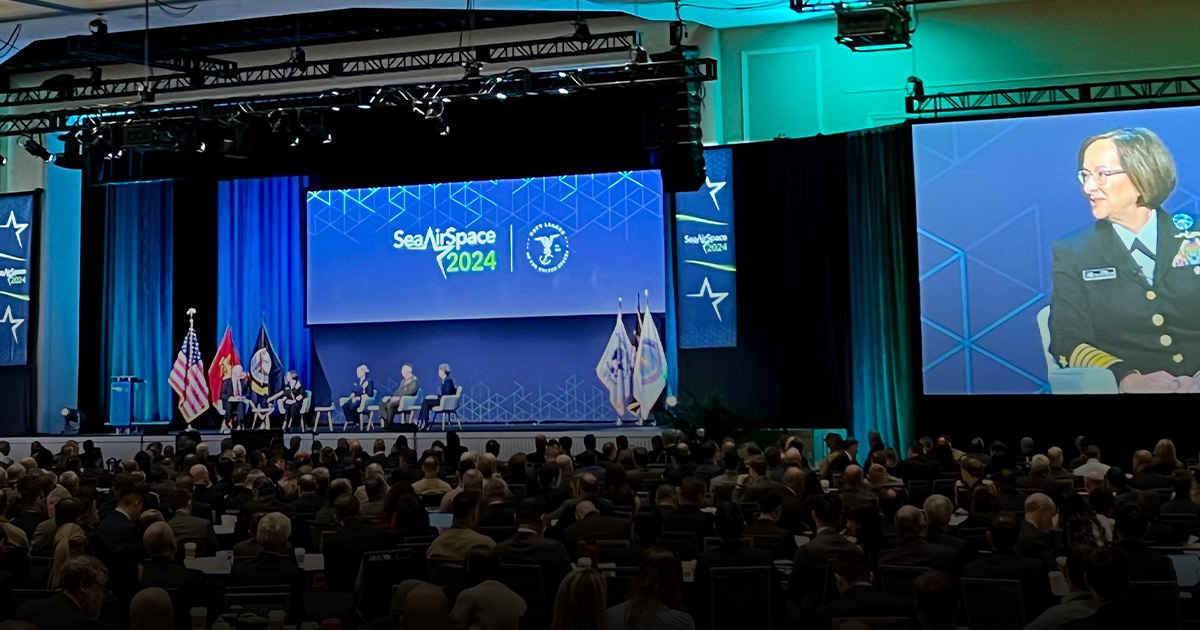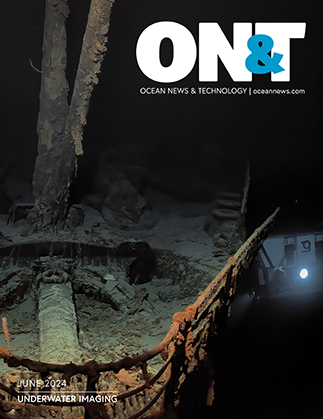Both events are well-established meeting points for key naval personnel and defense supply chains, and so, undeterred by any transatlantic scheduling challenges, ON&T—a preferred media partner to both—spent two days at each to listen, learn, and reflect.
At a time of mounting geopolitical tension, the tone for the week was set first at SAS—now the largest maritime exposition in the US, attracting military decision makers, public office officials, and private sector leaders from around the globe. At the Opening Ceremony and Chiefs Leadership Session, keynote speaker the Honorable Erik Raven, Under Secretary of the Navy, stressed that although the 0.7% budgetary increase for FY 2025 budget involves “tough choices,” the available funding boldly advances undersea capabilities, the development of 31 amphibious ships, and the fielding of advanced uncrewed technologies within relevant and much needed timeframes.
READINESS TO RESPOND
This cautious optimism was not only shared among the distinguished panel but in many of the sessions during the week. The need for readiness, resiliency, and flexibility was a sentiment echoed throughout the week’s busy and insightful conference agenda. While there is little debate that the US Navy must expand its fleet, a readiness to respond to today’s threats with the right platforms, managed by the right people, at the right time and location is imperative.
However, that does not equate to doing more with less. It means making measured and increasing targeted investments in a time of fiscal constraint. While the operational intricacies associated with the development, planning, and steady integration of unmanned technologies above, on, and below the waterline were central to many discussions, so was a focus on investing in people. That is, the recruitment and retention of engaged personnel remains a priority, with clear professional development plans and career prospects paramount at a time of rapid technical advancement in the field.
INVESTING IN PEOPLE
The future requirements of the next generation of ocean professionals were also high on the agenda at UDT 2024. The event’s theme, Mastering undersea challenges: innovation and resilience in a complex domain, offered a more subsea-focused forum to explore all aspects of underwater defense and security, but professional development was a dominant thread.
How to recruit, train, and retain talent at a time of accelerated technological advancement is something of a moving target, as is the question of reskilling existing professionals in the age of artificial intelligence (AI) and machine learning (ML). Conversations about people management naturally dovetailed with the potential operational gains presented by advances in autonomy, and, again, of unmanned systems.
HARNASSING AUTONOMY
The promise of AI and data-fueled autonomy—a battlespace increasingly assessed and governed by remotely operable assets and digital twin technology—is a shared mission among the public and private sectors. This was evidenced by day two’s keynote panel discussion surrounding the Royal Navy’s (RN) transition to an autonomous force.
The RN needs to increase its underwater mass for anti-submarine warfare and initiatives like Project CETUS—a 12-m XLUUV now in manufacturing—and Project CHARYBDIS—an initiative to develop a USV for wide-area tasks that is large and resilient enough to operate long-endurance missions in the Atlantic—exemplify how collaboration between naval forces and the commercial entities are leveraging shared learning to drive progress towards a truly integrated maritime system of systems.
Central to this underwater ecosystem—which includes a range of ASW sensors, gliders, seabed arrays, and MCM devices—is the SSN-AUKUS.
AUKUS
AUKUS was, unsurprisingly, a major talking point at both SAS and UDT. Addressing delegates at SAS, The Honorable Pat Conroy MP, Australia’s Minister for Defence and Minister for International Development and the Pacific, stated that AUKUS was fundamentally about “maintaining peace and stability in the Indo-Pacific,” but this is also a generational trilateral commitment to developing best-in-class ocean technology.
Landmark endeavors that depend on unwavering international cross-sector cooperation can often pose more questions than answers, and a year on from when AUKUS partners announced, on March 13, 2023, their “Optimal Pathway” to produce a nuclear-powered submarine capability in Australia, stakeholders to the speaker lectern at both SAS and UDT to share progress to date.
Pillar 1 under AUKUS is a commitment to support Australia in initially acquiring three Virginia-class nuclear submarines to replace its current fleet in the 2030s, as well as the collaborative development of the “SSN-AUKUS,” a future state-of-the-art platform for introduction to the UK fleet in the 2030s and in Australia in the 2040s. For Australia alone, it has been estimated that the Royal Australian Navy (RAN) will need to recruit and train up to 20,000 professionals to build and operate a new submarine fleet—again, strategic plans underwritten by long-term investments in people and human resources. This cultural exchange has begun with a growing number of RAN servicemen and women now stationed in the US and UK.
Pillar 2, intends to enhance joint capabilities and interoperability, integrate supply chains, and identify technological opportunities—especially in the fields of AI and quantum technologies—to advance undersea defense capabilities.
SECURING SUPPLY CHAINS
The unified ambition of AUKUS is clear, and while there is much detail yet to transpire, this agreement is a commitment to innovation, one that will rely not only on technology breakthroughs and diplomacy, but also on people. AUKUS is as much about securing the right people and the right supply chains as it is about securing the underwater battlefield.
Perhaps that is the key takeaway from SAS and UDT: Future defense priorities—both generational and immediate in timeframe—can only be met with a firm commitment to industry initiative and integration.
And, as is so often at premier industry events, it is in the exhibition hall where the depth of opportunity hits you hardest, with both SAS and UDT floorplans boasting the latest marine technologies primed and ready to deploy, some with dockside demonstrations and on-stand test tanks. These industry meets are instrumental to supply chain networking and identifying new synergies; the progress is tangible.
This story was originally featured in ON&T’s May issue. Click here to read more.

